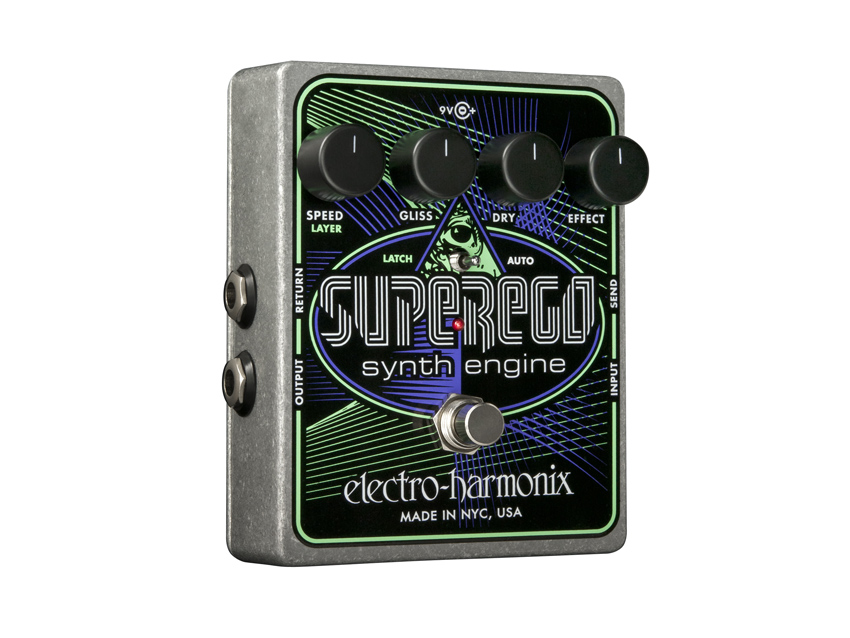Electro-Harmonix Superego Synth Engine pedal unveiled

Guitarists and synthesizers have never been the most comfortable of bedfellows, but Electro-Harmonix will be hoping that its new Superego pedal can help to make the relationship a little more cosy.
Designed to do crazy things to captured notes and chords, the Superego has plenty going on under the hood but has a simple control layout.
The Superego will be available from the middle of this month and has a US price of $283.60. More details below
Electro-Harmonix Superego Synth Engine press release
EHX's new Superego Synth Engine can capture and hold notes or chords, perform fluid glissandos and create oscillator like synthesizer effects. It enables the player to stack or layer sounds, create infinite sustain, even tweak attack and decay. The Superego's effects loop also lets a musician insert effects into the wet signal.
Although quite powerful, the SuperEgo has a simple control layout. The Speed control adjusts the attack and decay rate, creating everything from short to infinitely sustained sounds. It doubles as a level control for layers in Latch mode. The Gliss knob adjusts the glissando or glide speed between notes and chords. The Dry and Effect knobs are level controls.
The one-of-a-kind pedal also features three modes controlled by a mini toggle switch: Auto, Momentary and Latch. In Auto mode, the Superego captures and freezes a note or chord and holds it until the next note or chord is played. In Momentary mode, a note or chord is captured as the footswitch is depressed and released when it is released. Latch mode enables the player to layer or stack sounds.
The new Superego Synth Engine pedal, set for a Mid-May release, is housed in a solid die-cast package, is equipped with a standard 9.6-Volt/DC200mA AC adapter and carries a U.S. list price of $283.60.
Want all the hottest music and gear news, reviews, deals, features and more, direct to your inbox? Sign up here.

I’m the Deputy Editor of MusicRadar, having worked on the site since its launch in 2007. I previously spent eight years working on our sister magazine, Computer Music. I’ve been playing the piano, gigging in bands and failing to finish tracks at home for more than 30 years, 24 of which I’ve also spent writing about music and the ever-changing technology used to make it.